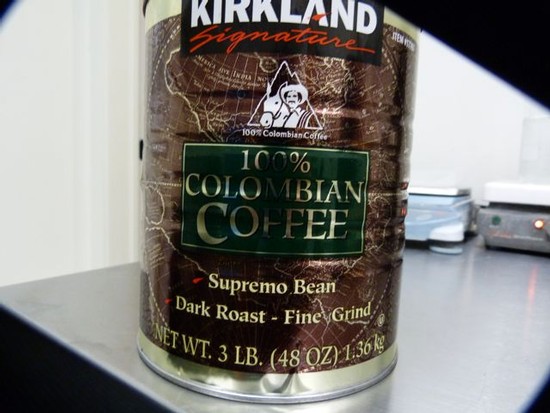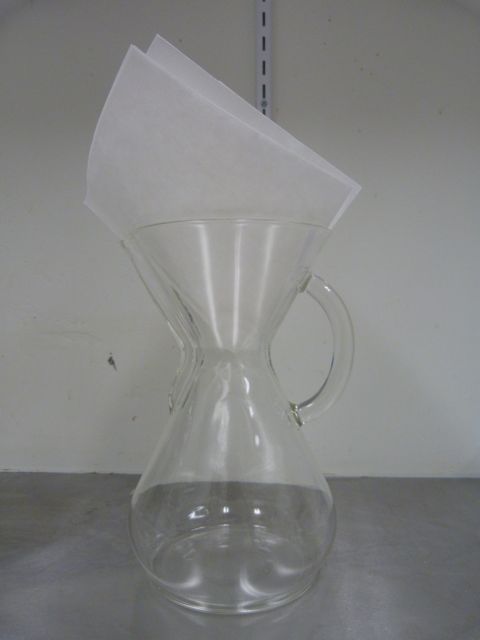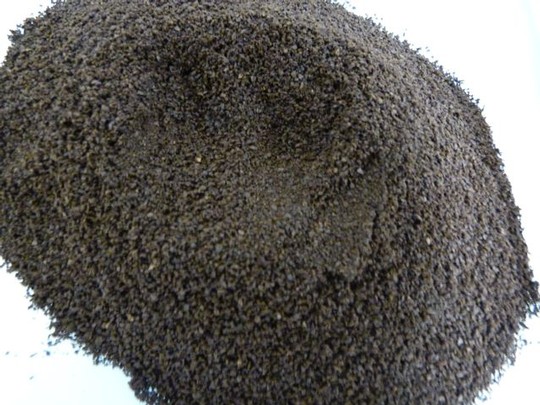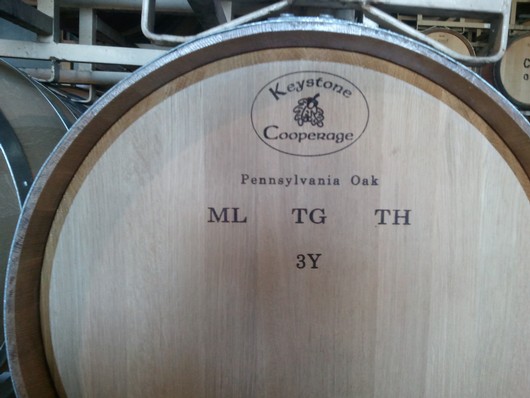About 5 years ago, I was living on Capp and 21st in the Mission District of San Francisco. Ah the days of living post collegiate hipster lifestyle non-sense. Vegan burritos at Papalote. Buying the new Six Organs of Admittance record at Aquarious. Tweaking my Italian single speed commuter with help from Freewheel. And of course, getting a freshly pressed cup from Ritual Roasters. It was the closest coffee to my house, so an easy stumble after your typical late night. But, as much as I loved my press pot coffee from Ritual, there were days when a ride over to Philz for a hand poured cup was more the flavor I was looking for.
Today as a wine maker in Paso Robles this all came flooding back to me as I was tasting through the 2010 wines for the first time. The difference in flavors from the exact same fruit that was produced by punching down or by pumping over during harvest was amazing. So I decided to do a little experiment that might explain these wine making styles in a way a bit more familiar to most people. Friday morning was 2009 Zinfandel blending trial day. Spending the morning tasting multiple samples of Paso Robles Zin can lead to nap time real fast. So to wake everyone back up, coffee was called for.
The winery lab became a coffee brewing lab for the day. I wanted to see if making coffee with a press pot and a pour over would produce similar differences as do punch-down wines and pump-over wines. Plus I'd throw in a baseline cup made from Costco's finest just to make things a bit more fun and prove that care and good decisions in the vineyard and winery really do matter.
First the the baseline cup, which would be the "factory" wine style. Machine harvested, huge fermenters, all about high through put and low price. These are your $10 and lower bottles, or your gas station coffees. Auto-drip of course, because hand punching down 500 tons of fruit can be a bit tough. It will be represented by a 2 month old can of pre-ground dark roasted Costco pure Columbian "Supremo" (must be Spanish for really good eh?) I raided from the winery kitchen. Juan Valdez on there speaks to the authenticity.

This will then be brewed in a classic Black and Decker auto-drip brewer. Because when you think of culinary excellence, you think of Black and Decker right?

The contenders will be a Bodum press pot, which will represent the punch down method of winemaking.

And in the other corner, a Chemex pour-over, because pour-over and pump-over are almost the same thing. At least when you say them.

For our more barista approved brewing methods, we'll be using a Guatemalan coffee from Four Barrel in San Francisco. Purveryours of fine fresh roasts and also where I scored the Chemex for a super deal!

As you can see, this is a much lighter roast than the Costco stuff. First a close up of the DARK roasted supremo.

Oh my! Now the lighter roast more "fruit-forward" coffee.

To keep things scientific, we will use 800 ml of water to go along with that 53.39 grams of coffee for each of the three methods. The Black and Decker will heat water by itself, to an impressive 154 F. Since my hopes for the baseline cup are next to nil, the pure science will leave that brew behind. The other two methods will get heated up to the recommended 197 F. Of course using a hot plate and stir bar for even accurate heating.

So rough grind, into the press-pot and in goes the water. A quick stir and 4 minutes later, the press.

Our "pump-over" coffee gets a slightly finer grind and a once over with the water.

Time for the results. Here are the three brews properly displayed in Pyrex beakers for that lab look and feel. The dark roasted Columbian is the darkest as you would expect. But what is amazing is the color difference in the press-pot in the middle and the pour-over on the right.

I was impressed by how this pretty much confirms the convention in winemaking. The use of punch downs is considered a much more gentle treatment of the fruit. Pumping the must over the top of the skins is more extractive. You will get deeper color and more tannins that way. Which sounds great, but sometimes these can overpower the fruit. Thus punch downs are preffered when your are looking to emphasize complexity and nuance as opposed to power. As far as the coffee goes, it was amazing how harsh and bitter the Costco cup was. It required some cream and sugar to choke down. Another great analogy to wine as under-ripe and over-extracted wines are often left with a bit of residual sugar because it hides the bitterness. Whereas properly ripened fruit, like properly roasted coffee, produces all the wonderful full flavor with none of the harsh bitterness. I encourage you to try this at home. It is great practice in sensing bitter in what you drink. And also you will also teach your palette how sweetness hides the harsh flavors so you can call out wines that use that crutch.
To conclude, I wouldn't say always punch-down or always pump-over your wine. They don't live in a better or worse type of world. They produce different end products, and it is up to the wine maker to make the correct decision as to when to use the technique that will get the most out of the grapes, or in this case, the beans.
One of the challenges of working with a newly producing vineyard is that is takes you quite a few vintages to figure out your barrel program. Winemakers will all have favorite barrels that are kind of their go to options, but until you get to really know the fruit the vineyard is producing, it's mainly guess work. Different barrels will add different features to the overall experience of the wine. Suffice to say, some barrels you smell and taste in the wine. Other barrels you only feel. And only developing that first hand knowledge of what the fruit from a vineyard needs will allow you to have a successful barrel program.
To begin this post in another way, experimentation with barrels is still the name of the game here at Calcareous. A barrel that I brought in for the first time in 2010 was Keystone Cooperage. I had asked around few other winemakers in Paso and gotten positive feedback about Keystone. Solid barrel for Cabs, Syrahs, and Zins was the general consensus. That can be a bit scary though because those are the big boy wines and are capable of hiding barrel character. I often talk about how early American coopers made oak barrels for things like salt pork and whiskey. Nobody cares if there's a bit of woody flavor in those things. I mean, throw down a shot of Old Potrero and impress the crowd by saying "Oh that's really smooth but the oak finish really overpowers there." Um, probably not going to happen. You need all the smoke and wood possible to stand up to the huge flavors in whiskey, so the barrels can be monsters. Thus American barrels had a bad reputation because Chardonnay can, at times, be a bit more restrained then rye. Luckily things have changed.

To prove the point, let's decipher all the letters and numbers on that barrel head. First the cooperage stamp is rather self explanatory. Nice little oak leaf and acorn design there I must say. Next, most American barrels will now tell you where trees were grown. The climate that the forrest grows in determines the grain structure of the wood. Warm regions produce faster growth and wider grain. Cold forests have shorter growing seasons thus tighter grain. And when it come to American White Oak, there is a big range of where it grows.

From East Texas to Maine the great Quercus alba forest covers nearly a third of the country. Keystone is Pennsylvania only, thus you generally get medium to tight grain wood in their barrels. That is what the "TG" stands for, "tight grain". Not to produce a full tome on oak here, but generally the tighter the grain, the slower the extraction from the barrel will be.
The letters "ML" indicate the toasting level. In this case "ML" means "medium long". I requested this toasting style which is a lower heat for a longer time. A medium toast will give you more oak structure instead of the smoke and caramel you get from the toasting process. Again, that is a decision you need to make based on what you feel the wine from your vineyard needs. Also, when working with a barrel for the first time, I like to try and taste the wood not the toast. The toast can be fined tuned, the wood is the wood. The longer time of the toast gives you a deeper penetration into the wood. Thus if the wine is in the barrel for 18 months, the toast is deep enough to prevent the wine from interacting with un-toasted wood. The "TH" is another toasting indicator, meaning "toasted heads" The heads account for a significant amount of the surface area of the barrel, thus toasting the head as well is an important step if you want to control the impact of the barrel.
Lastly is "3Y" which means "three years" of wood aging. Once the trees get turned into stave logs at the mill, they sit outside. Two years is the basic time your average cooperage will allow the wood to age outside. The longer the wood is exposed to the sun, wind and rain, the milder the "oakiness" becomes. This is one of those "aha" things the French had to explain about how to make barrels for wine instead of whaling ship rum. Thus, with American oak that can be a bit more powerful than French oak, I prefer a full 3 years of weathering. It costs a bit more, because the stave mill needs to have the oak sitting around for an extra year before selling it, but for me it is worth it.
The last thing about these barrels that you can't see here is that they are a slightly larger size. I order these barrels in the 265 liter size. The normal French barrel size is between 225/228 liters depending on the shape. By having a larger barrel, you decrease the surface area to volume ratio, thus producing a situation with less extraction.
This month, finishing my initial tasting trials for these barrels, I have been pleased. I think Keystone will be with us for a while. If you stop by the winery, look me up and you can taste for yourself.